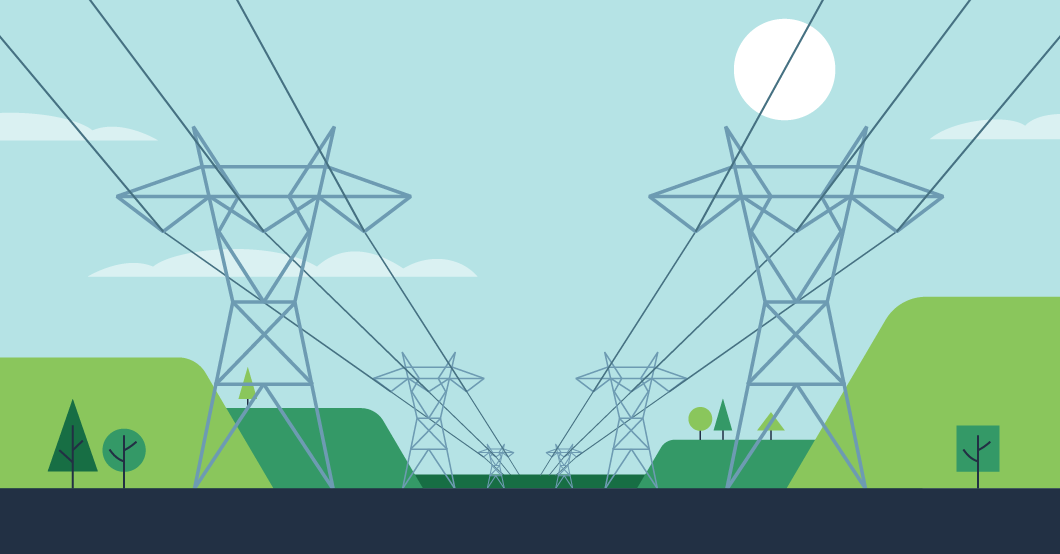Growth in solar energy means changes for power grid planning, operations
 Solar energy has become one of the fastest growing types of electricity generation in New England. Based on ISO New England and available state data, more than 250 megawatts (MW) of solar photovoltaic (PV) resources were installed by the end of 2012—and approximately half of that was in 2012 alone. While this is still a relatively small amount—many conventional power plants in New England are larger than this aggregate capacity—the mounting volume and pace of solar development has prompted ISO New England to ratchet up its efforts to understand the impact this resource and other distributed generation (DG) technologies, such as cogeneration, biomass, and wind turbines, will have on the regional grid.
Solar energy has become one of the fastest growing types of electricity generation in New England. Based on ISO New England and available state data, more than 250 megawatts (MW) of solar photovoltaic (PV) resources were installed by the end of 2012—and approximately half of that was in 2012 alone. While this is still a relatively small amount—many conventional power plants in New England are larger than this aggregate capacity—the mounting volume and pace of solar development has prompted ISO New England to ratchet up its efforts to understand the impact this resource and other distributed generation (DG) technologies, such as cogeneration, biomass, and wind turbines, will have on the regional grid.
What’s driving the growth?
Several factors are driving the expansion of solar facilities in New England:
- Significant decrease in equipment and installation costs
- Ease of the siting and approval process relative to other generation types
- Federal subsidies and tax credit programs
- Evolving project financing structures
But perhaps the most significant reason for the increasing numbers comes from state-sponsored programs aimed at achieving public policy goals. Each New England state either has established Renewable Portfolio Standards or related goals for the amount of electricity produced by renewable resources, and most also have set targets or created programs to specifically encourage the growth of solar or other types of DG. For example, in Massachusetts, the Green Communities Act of 2008 set a target to achieve 250 MW of solar power by 2017 and established additional credits and financial incentives to spur investment. Earlier this year, Massachusetts reached its goal of 250 MW—four years ahead of schedule—and announced a significantly higher target to achieve 1,600 MW by 2020.
In light of the recent uptick in policy goals and the resulting acceleration of PV development in the region, ISO New England estimates that more than 2,000 MW of DG, mostly in the form of PV resources, will be installed regionwide by the end of 2021.
|
How does solar energy work? According to the NASA website, PV works by converting light into electricity, and it starts at the atomic level: “Some materials exhibit a property known as the photoelectric effect that causes them to absorb photons of light and release electrons. When these free electrons are captured, an electric current results that can be used as electricity.” |
Characteristics of solar: on the bright side
Like wind, solar energy is an intermittent, renewable resource: its electricity output varies based on the weather. Because it uses the sun for fuel, it produces emissions-free electricity, but only during daylight hours. Its electricity output is also influenced by cloud cover, haze, temperature, and wind speeds. PV often produces the greatest amount of electricity in the spring and slightly less during summer months when it is hotter and more humid.
Unlike most wind facilities, which are interconnected to the high-voltage transmission system, PV facilities are typically connected at the utility distribution system level (or lower-voltage lines). The majority of regional PV installations are small in size (less than five MW), and many, but not all, are located behind a customer’s meter. This behind-the-meter configuration can offset the amount of electricity a customer needs to pull from the grid because they are able to produce some or all of the electricity they consume from their solar array. In other words, at certain times, PV can have a dampening effect on consumer demand.
Many solar facilities also frequently transmit electricity onto distribution lines, which can occur when a solar array produces more power than can be consumed onsite.
Challenges to integrating larger amounts of solar
ISO New England has been paying close attention to regional trends in solar and other DG development for nearly a decade, and currently, PV is already factored into ISO New England’s long-term planning in several ways:
- PV projects participating in the Forward Capacity Market help ISO meet regional capacity requirements; typically, these are larger-scale installations
- Existing PV installations registered in the region’s wholesale energy market are counted as regional generation
- The remaining PV reduces the amount of load that is considered in the development of the long-term load forecast
This approach has been sufficient given the historically small amount of PV in the region, and until recently, policy and industry indicators suggested that these resources would not have a substantial impact on the planning and operation of the New England grid for a number of years. However, the rapid growth of PV in the region over the past two years and expanded state goals have prompted ISO New England to take steps to better understand and prepare for the challenges associated with a large influx of PV.
Limited data currently available
ISO New England operates and administers generator interconnections to the high-voltage transmission system—but not the distribution system, where most of the PV facilities are connected in New England. As a result, the existence of many PV resources is currently unknown to the ISO. Some of these resources are registered as generators in ISO New England’s wholesale energy market, but their energy production data is submitted to ISO after the fact as part of the settlement process. Therefore, these resources and their real-time electricity output are not “visible” to ISO system operators.
Impact on consumer demand, power forecasting
On a daily basis, ISO New England forecasts consumer demand for power for seven days, the next day, and on an hourly basis, and those forecasts are adjusted in real-time as needed. Because electricity cannot be stored in any significant amount, having accurate demand forecasts is critical to scheduling the appropriate amount of power to be produced by generators every second of every day. However, as the amount of solar electricity grows, the variability of solar facilities’ electricity production, as well as their dampening effect on consumer demand, will increase the uncertainty of overall system demand. This will eventually impact the way we forecast power consumption needs in the future.
 Cloud cover can affect the electricity output of a solar array in just seconds! According to the article, “PV Measures Up For Fleet Duty,” featured in the March 2013 edition of IEEE Power & Energy Magazine, power output from an individual PV plant often varies by as much as 10% of its nameplate rating per second.Further, a large increase in solar installations will likely shift the time when consumer demand peaks to later in the day. For example, PV tends to contribute more electricity to the grid in the early afternoon and less in the late afternoon. With more PV offsetting the amount of demand on the system during the early afternoon, the day’s peak will occur later as PV electricity production decreases as the sun begins to set. And, as electricity production from these facilities drops off quickly, other fast-responding, flexible generators may be needed to produce power.
Cloud cover can affect the electricity output of a solar array in just seconds! According to the article, “PV Measures Up For Fleet Duty,” featured in the March 2013 edition of IEEE Power & Energy Magazine, power output from an individual PV plant often varies by as much as 10% of its nameplate rating per second.Further, a large increase in solar installations will likely shift the time when consumer demand peaks to later in the day. For example, PV tends to contribute more electricity to the grid in the early afternoon and less in the late afternoon. With more PV offsetting the amount of demand on the system during the early afternoon, the day’s peak will occur later as PV electricity production decreases as the sun begins to set. And, as electricity production from these facilities drops off quickly, other fast-responding, flexible generators may be needed to produce power.
Harmonization between state and ISO-administered interconnection requirements needed
Differences between state interconnection requirements for PV resources at the distribution system level and the ISO-administered interconnection standards that apply to larger, conventional generators interconnecting to the region’s high-voltage system, is a critical issue that needs to be addressed by ISO New England and state and industry officials.
For example, unlike large conventional generators, distribution-connected PV generators are not typically required to “ride-through,” or withstand, disturbances on the system that can result when there is an unexpected loss of a transmission line or large generator. Consequently, during these situations, large amounts of PV could trip offline all at once, creating a sudden rise in demand that could potentially further jeopardize the reliable operation of the power system.
How we’re preparing
New technology is transforming the New England power grid as we know it. As a region, we need to ensure that integrating an increased amount of PV and other DG resources can be done while still maintaining system reliability.
This fall, the ISO, state policy makers, DG/PV program administrators and distribution utility company representatives will embark on a collaborative initiative to address the challenges with integrating large amounts of DG resources, with a particular focus on PV. Similar to the Energy Efficiency Forecast Working Group, the members of this new Distributed Generation Forecast Working Group (DGFWG) will be tasked with gathering information about DG resources in New England and developing a forecast of future DG growth that can be incorporated into the long-term system planning process going forward.
At the same time, the ISO is participating in a National Renewable Energy Laboratory study aimed at examining the possible reliability and operational concerns associated with large amounts of distribution-connected generators. ISO New England will also be engaging the states in this discussion in an effort to review and harmonize the relevant standards to ensure reliability of the regional power system.
The ISO will also be a part of a team led by IBM on a Department of Energy-funded project to develop ways to improve the science of solar forecasting, which will become increasingly important as these facilities grow in number. Better solar forecasting will enhance situational awareness for ISO’s system operators and enable the efficient commitment and dispatch of other resources.
For more information about solar and DG growth and its impact on the region, view this presentation, recently given to regional industry stakeholders.
- Categories
- Industry News & Developments
- Tags
- generation, renewable resources, solar, system operations



